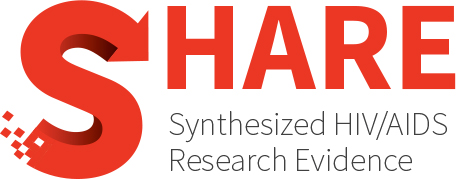Category Archives: Cardiovascular
Effect of omega-3 polyunsaturated fatty acids treatment on lipid pattern of HIV patients: A meta-analysis of randomized clinical trials
Even though omega-3 polyunsaturated fatty acids (PUFAs) seem to be effective in the treatment of human immunodeficiency virus (HIV)-associated dyslipidemia, their impact is still debated. For this reason, our aim...
Global burden of hypertension among people living with HIV in the era of increased life expectancy: A systematic review and meta-analysis
BACKGROUND: Although HIV infection and antiretroviral therapy (ART) increase the risk for hypertension in people living with HIV (PLHIV), the global and regional burden of hypertension in PLHIV is not...
A comparative analysis of blood pressure in HIV-infected patients versus uninfected controls residing in Sub-Saharan Africa: A narrative review
Elevated blood pressure (BP) is an important risk factor for cardiovascular disease and mortality in Sub-Saharan Africa (SSA). We reviewed the literature comparing BP in treated HIV-infected populations against untreated...
Stroke and systemic thromboembolism prevention in people living With human immunodeficiency virus with atrial fibrillation: A review of its implications for clinical practice
In the last few decades, types of diseases affecting people living with human immunodeficiency virus (PLHIV) have shifted as the population ages, with cardiovascular disease becoming a leading cause of...
Prevention of cardiovascular disease for historically marginalized racial and ethnic groups living with HIV: A narrative review of the literature
Despite developments to improve health in the United States, racial and ethnic disparities persist. These disparities have profound impact on the wellbeing of historically marginalized racial and ethnic groups. This...
Human immunodeficiency virus and risk of pre-eclampsia and eclampsia in pregnant women: A meta-analysis on cohort studies
Maternal HIV infection is related to several perinatal adverse outcomes. This study is aimed at establishing whether maternal HIV infection is associated with the development of pre-eclampsia (PE) and eclampsia....
The effect of HIV infection, antiretroviral therapy on carotid intima-media thickness: A systematic review and meta-analysis
AIMS: We performed a systematic review and meta-analysis on the effect of HIV infection and antiretroviral therapy (ART) on carotid intima-media thickness (cIMT) to elucidate the role of HIV infection...
Combined antiretroviral therapy for HIV and the risk of hypertensive disorders of pregnancy: A systematic review
OBJECTIVE: To assess if there is a relationship between use of combined antiretroviral therapy among pregnant women living with HIV and hypertensive disorders of pregnancy (HDP). DESIGN: Due to the...
Heart failure among people with HIV: Evolving risks, mechanisms, and preventive considerations
PURPOSE: People with HIV (PHIV) with access to modern antiretroviral therapy (ART) face a two-fold increased risk of heart failure as compared with non-HIV-infected individuals. The purpose of this review...
Abnormal QTc syndrome in HIV-infected patients: A systematic review of prevalence and risk factors
BACKGROUND: The purpose of this review is to critically analyze data regarding the prevalence and risk factors for developing a prolonged QTc interval and subsequent sudden cardiac death (SCD) in...
Risk of myocardial infarction among people living with HIV: An updated systematic review and meta-analysis
OBJECTIVE: Cardiovascular disease (CVD) is one of the leading non-AIDS-defining causes of death among HIV-positive (HIV+) individuals. However, the evidence surrounding specific components of CVD risk remains inconclusive. We conducted...
